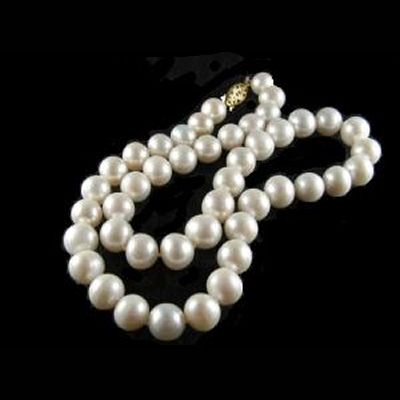• Threading the Pearls
Threading the Pearls
I am not sure that you have ever made a pearl necklace. Of course, to make a necklace, you have to have a good supply of pearls, some strong nylon thread, and a needle to insert the pearls onto the thread.
We could liken your pearls to the segments of your message: that could include the magic tricks, object lessons, visuals parts that make up your visualized message presentation. Thus, the message consists of a collection of pearls connected together by transitions that move the audience from the previous unit to the next in some seamless way. Your message is just like the whole necklace, which is made up of the sum of the parts.
One of the problems performers have in their message development is what is done between the pearls (message units). We call these transitions. The purpose of the transition is to take the attention gained from the first effect and transition it to the next visual effect (or magic trick).
This can be problematic because you can loose the eye focus of the children in the bad transitions. So the presentation comes off like a collection of pearls with inadequate transitions. It is a lot more work to recapture the lost attention. We usually depend upon the effect to hold the attention, but we can too easily loose it in the transition.
So what is the remedy for holding the pearls together? What does this is a very tight gathering of the pearls on the nylon or wire. It is all most seamless from one pearl to the next.
Here are some practical remedies to help you plan your transitions…
1. Think about what is said between each effect (pearl). Write out your transitions. Each pearl is like a point in the outline, the whole strand is the illustrated message. So every pearl contributes to the whole of the message.
2. Think about what focus is at the end of the effect and think about what the focus needs to be for the beginning of the next effect. These are the visual aids.
3. Consider what is said or spoken at the end and beginning of each effect.
4. Consider what movements you make to attract attention in the transition.
5. Consider where you position the next item on the stage, so as to minimize lost time getting to the next effect.
6. Consider orchestrating the focus by using your voice and microphone.
7. If you use volunteers, think through the best way to get them on stage, so as not to loose too much time and therefore create a gap in the transition.
8. You can loose time between effects by not accounting for the time laughter takes away from the transition.
9. Let go of the previous effect and immediately pick up the next item and begin the transition with something in your hand.
10. Add movement and words to redirect the focus of the audience by calling attention to something. “Look over here.” “Do you see what I have?” “Now this is interesting, but what is it?” “Does anyone know what this is?”







Leave a Comment